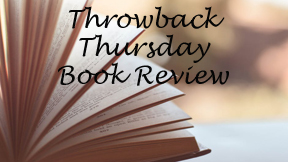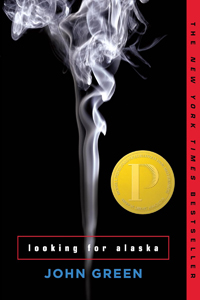In my review of the 2019 TV miniseries adaptation of John Green’s “Looking for Alaska” (2005), I argued that the series breaks down the trope of the Manic Pixie Dream Girl by making a point to explore her genuine character. But if the show truly functioned as a reaction to that trope (given a name the same year as the book’s release, by film critic Nathan Rabin, describing Kirsten Dunst in “Elizabethtown”) it is accidental.
Reading Green’s 2005 novel, I realize it does the same thing the TV adaptation would do 14 years later: It shatters the trope by thoroughly diving into it. First, though, we must establish Alaska Young as our MPDG: Through the eyes of Miles “Pudge” Halter, a junior at a camp-like Alabama boarding school with A/C-less dorms, Alaska is a pretty, quirky and fascinating mystery. Through Miles’ infatuation, even her flaws become beautiful. He is immediately in love with her.
Because actress Kristine Froseth is such a presence in the TV series, I see it as a shattering of the MPDG as we go into detail about Alaska’s worldview (life is a labyrinth of suffering), hobbies (compiling a Life Library of books from yard sales), academic skills (pre-calculus, oddly), bad habits (smoking and drinking) and socially controversial behaviors (a high sex drive and an interest in pulling off elaborate pranks). Froseth is perfectly cast as Alaska, but because we can see and hear her, she can’t help but be more substantial than the book character.

Peering through the ephemeral fog
The novel’s Alaska Young lands slightly differently. Books allow for a reader to feel like they grasp a character, while also appreciating their ephemeral quality. A girl can be perfect, despite her imperfections, in the false reality of a boy’s crush — and this is what Green pulls off with Alaska.
For starters, yes, Alaska is a classic MPDG under Green’s pen. But Pudge — and his roommate/bestie The Colonel and their friends Takumi and Lara – thinks about her all the time, especially after the mid-book “event” sparks questions.
They also ruminate on her before that, partly because Alaska purposely cultivates an air of mystery by behaving in contradictory ways. Sure, Pudge’s thoughts are often romantic and sexual (to his frustration, as Alaska has an off-campus boyfriend to whom she is loyal), but everyone certainly sees Alaska as a friend, not only a physical object.
As such, Green’s “Looking for Alaska” is a delicately balanced mix wherein Alaska stands for a trope (in part thanks to her own cultivation of her image), yet Green (via Pudge) also clearly believes to his core that she’s more than that.

A mysterious event propels the narrative
In his first YA and first overall novel, Green wisely creates a structural parallel to the mystery of Alaska’s nature: We start “136 days before” an unnamed event, and end “136 days after” the event, which has been revealed (sans Alaska’s motivation for the event) by that point. Pudge and friends put Alaska on a pedestal, but because of the narrative structure, it’s forgivable that they do that.
“The event” also tamps down the risk of pretentiousness inherent in this 21st century “Catcher in the Rye.” Pudge, et. al., are full of themselves and their circle of friends in the way of all teenagers, but people of any age would be obsessed with the questions triggered by the event.
Green smoothly inserts a comparative religions class as a tool for examining the meaning of life, thus making the school more than merely an excuse to get this group together. Pudge’s hobby is Manic Pixie Dream Boyish (if a female main character was observing him from a distance): He learns famous people’s last words. In this way, he shows respect for adults; plus, he also appreciates his parents (although, interestingly, his dad is a man-child, famous for pulling off a legendary prank at this same school) and his comparative religions teacher.
Still, the trope holds: The MPDG is the male protagonist’s main guide in seeking his proper life path. (“Elizabethtown” is the purest form of this, with some believing Claire is a metaphorical or even literal guardian angel.) But Alaska doesn’t exist for the sole purpose of being Pudge’s guide.
We learn that a traumatic, life-shaping incident happened in 1997, eight years before she meets Pudge. And Pudge and friends must reconcile with evidence that on the night of the pivotal 2005 event, Alaska was likely not thinking about Pudge or her other friends, or even her off-campus boyfriend, when she made a fateful decision.
Grappling with the reality of the fantasy
“Looking for Alaska” acknowledges the unhealthiness of boys and men having MPDGs occupy their fantasy worlds while also saying “Look, this is how it is. Pretending otherwise isn’t healthy, either.” Green gives weight and legitimacy to reality – sympathizing with a common feeling while acknowledging its wrongness.
Like Alaska, Pudge and The Colonel are flawed, selfish and ridiculous. That’s sometimes irksome in miniature (Do they realize how cliched and outdated they are with their smoking and drinking?). But over the course of the novel, it’s good character building through starkly described behaviors. (So much so that “Looking for Alaska” earned Banned Book status for “offensive language” and “sexually explicit descriptions.”)
I’m not saying Green is Salinger, or that his debut novel adds genre-reshaping layers to the coming-of-age template (like, for example, the 2002 movie “The Good Girl” does in adding pitch-black humor to the Holden Caulfield philosophy).
At times I can see the false fantasy of this boarding school, wherein the threat of expulsion hovers in the form of an administrator nicknamed The Eagle yet it’s a quick jaunt over to The Smoking Hole. I can see the false fantasy of the students’ lives: Attending class seems optional yet Alaska is a math prodigy and The Colonel knows the capitals and populations of every country on the globe. Green – age 28 upon the book’s publication — makes these teens uber-articulate like Kevin Williamson did for his “Dawson’s Creek” gang.
“Looking for Alaska’s” teens are both full of crap and fantastical, yet “Looking for Alaska” — as a novel (and later as a miniseries) — is not. It’s sober and grounded, and the author’s forays into the ephemeral achieve a beauty by contrast. So effectively does Green create believable teens that when he gets philosophical in the closing pages about the value of their big dreams (in contrast to the practicality of beaten-down adults), it has a ring of revelation.

